Future scenarios for wine
LE VOCI DEL VINO. Protagonisti del mondo enologico - Intervista a: MARILENA COLUSSI from SGA Wine design on Vimeo.
What were the research criteria?
The quantitative type of research involved widespread sampling of the Italian population, representative of the web population and interviewed via the internet: a sample of 500 cases from 18 to 64 years, Web People Doxa, and an even more extensive sample of more than 2,000 cases, interviewed through the HQ24 panel. Then, during Vinitaly, through the websites of the titles of the 24 Ore Group (Bargiornale, Gdoweek, MARK UP, Ristoranti, VigneVini), we conducted a quantitative survey of a group of 300 operators in the wine supply chain: restaurateurs, chefs, sommeliers, producers, distributors.
How has wine consumption changed in Italy, and in what way is the role of wine in our society evolving?
Wine consumption in Italy has changed a lot in the last 30 years, quantitatively and qualitatively. Wine consumption as traditional nourishment, made by the family or in the local area, has been replaced by a more discriminatory consumption, although in lesser quantities: indeed, currently consumption is below 40 litres per capita a year, practically half compared to 30 years ago.
Nevertheless, the appreciation of quality and the willingness to spend on wine has increased. Wine consumption is now less of a simply repetitive habit and more a pleasure, a choice.
Consumption has changed, it’s even become more feminine: more and more women are taking up wine, including as experts and connoisseurs or simply as enthusiasts and fans. Let’s explode a myth: young people like wine too, they don’t just drink beer or other fizzy beverages. When it is presented, explained and made accessible to their taste, their needs and their expectations, they also appreciate wine. Beer lovers and wine lovers are increasingly coming together and creating hybrid drinkers.
The relationship between Italians and wines has changed and continues to evolve. While the percentage remains constant of the so-called teetotallers, that is, Italians who say they do not drink wine (around 6%), 42% of drinkers say their consumption is moderate and balanced. Occasional consumers make up 28% and drink when the right occasion comes up, and 21% say they drink regularly. Only 3% say they drink in a sustained way.
As a whole, the consumers of wine that emerge from the survey are extremely multifaceted. It is therefore necessary to know how to position wines in different ways, depending on the target consumers.
What changes have emerged from the research in how and where wine is consumed?
In some regions, the culture of the aperitif, or wine with a snack has been around for a while but, historically, in Italy wine has always been linked to the main meals.
In recent years, however, we have seen the importance of wine as an aperitif increase while drinking wine during a meal has decreased. The meal is often now consumed away from home, a quick, light meal of one course or a snack. Wine during meals used to be seen as giving the food substance whereas, at parties or convivial dinners, it has become part of socialising.
Another significant change in how and where wine is consumed is that more and more Italians like places where they can buy wine by the glass, or glasses, to accompany a meal.
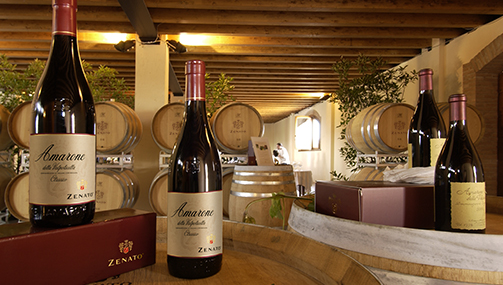
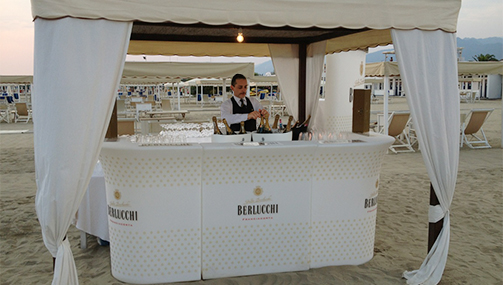
Above: Zenato, cellar tasting.
Below: Berlucchi, wine tasting on the beach.
How and where is wine bought today?
The accessibility of wine has increased a lot over the years with significant growth in the sale of wine in major retail outlets: the main supermarkets and also the discount hypermarkets. The major retail chains are the places where the majority of Italians (around 70% of those interviewed) had bought wine in the last 6 months.
Buying from the cellar, that is, directly from the producer, is nevertheless becoming more and more common: these are often ancient and very beautiful locations, but also innovative and pioneering cellars that offer an all-round experience that also involves the territory. The survey showed that, on average, across the two samples, 32% of those interviewed (28% of the Web Doxa population, rather younger, and 38% of the HQ24 panel, which includes a wider age range) had made a purchase at a cellar in the last 6 months. This is an important phenomenon, an expression of a need and, above all, a desire on the part of the customer. Buying wine means enjoying a pleasurable experience that is enriching at the cultural and interpersonal level.
Another important change in where and how wine is bought was introduced by the internet: e-commerce is displaying strong growth. Looking at both samples, between 11 and 14% had bought wine on the internet in the last 6 months.
Finally, let’s not forget buying from the classic wine shop, which is still common, not least because wine shops have evolved alongside wine bars or restaurants. Often they offer in-depth information, recommendations, tastings and gift-wrapping or packaging for a special occasion.
The survey also showed many other circumstances in which wine is commonly bought: agritourism during holidays, for example, or shops offering wine on draft, where 10% of those interviewed had bought wine in the last six months.
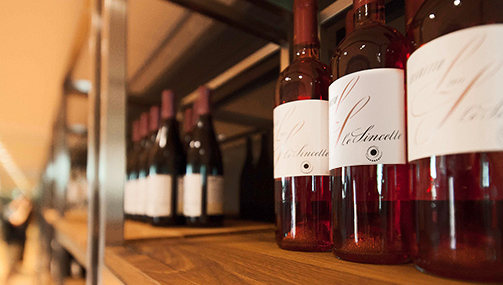
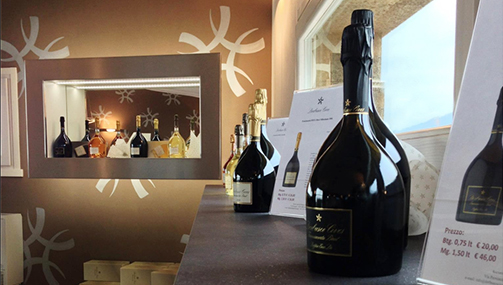
Le Sincette and Derbusco Cives: wine cellar retail store.
What type of purchasing experience are consumers mostly looking for?
Not all consumers are the same: some are more expert, more sophisticated, more willing to spend, and they require a certain level of information. Then we have the routine consumers, simpler, more traditionalist, who buy a brand or a product they already know.
If we are looking for a common denominator, it is that today people want an experience where the wine is at the centre. When a consumer partakes of a glass or a bottle of wine, he wants to absorb the culture that produced it, the environment, the territory and the producer, over and above the simple product.
The survey identifies 7 types of drinkers. Can you summarise them?
By looking at certain variables, from the expertise about wine to the willingness to spend and the quantitative ratio, we identified 7 profiles and then asked our interviewees which one they identified with.
The result is that we can identify the real wine enthusiasts who make up a group of less than 10% of drinkers. Enthusiasts are expert and passionate, regular drinkers who are more than ready to spend.
A substantial number belong to the group of so-called balanced consumers who juggle quality and price and drink in moderation. They rely on the advice of experts, friends, wine retailers and producers, or they look up information on the internet. These make up around 27% of the more youthful Web Doxa sample and 18% in the more statistically extensive HQ24 sample, around a quarter of our consumers.
Another quarter of the consumers can be defined as “aspirational”. They have a thirst for information, knowledge, culture, stimulation and stories about wine, but at the same time they consider the price element very important. Economical products need to be provided for this profile but they also need to have high cultural, symbolic and emotional value.
Then there are around 9% of “simplifiers” with rather plain, basic tastes. They do not like to change, they have a number of wines they tend to stick with, they are very concerned about the price and they look for solid, reliable, transparent, honest and easily recognisable products and brands.
Even more traditional, regular consumers are those who never deviate from the wines of their area, their region, and they tend almost always to drink the same type of wine, maintaining a strong bond with the land of origin and appreciating the authenticity of the product. These are generally rather older consumers, the majority living in the south.
Finally, we found around 7% of “followers”. They are not real wine drinkers but appreciate it on convivial occasions, often away from home, during happy hour and parties. They tend to prefer sparkling wines, usually whites, and consider wine the perfect drink to celebrate among friends.
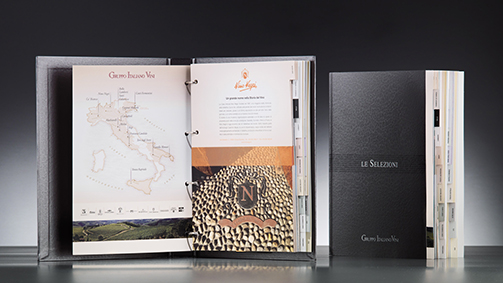
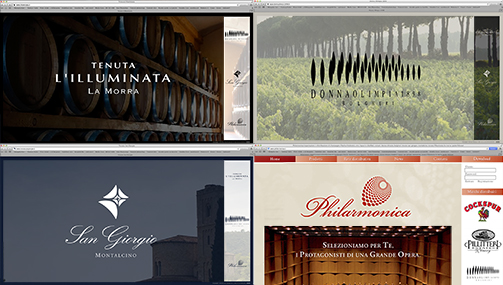
Above: GIV (Gruppo Italiano Vini): products catalogue.
Below: Guido Folonari: web sites.
To reach these different targets, the advertising of different wines should be different, shouldn’t it?
Yes, it would be wise. Often the same old clichés are trotted out, passing on the same message to the same type of consumer. In reality, especially during this time of crisis, risks have to be taken, moulds broken, new positions invented, and all those ‘marginal’ consumers who drink little and are not knowledgeable about wine must be considered. It is not helpful to look at this segment only in negative terms: it should instead be recaptured by sending out messages that are easier to understand, couching wines in more emotional and entertaining terms, encouraging the imagination to run wild. It is possible to diversify wine advertising yet still retain a common denominator.
What values influence the consumer in making their choice?
The panorama of Italian wine is very varied and complex. Nevertheless, the values that influence consumer choice can be traced to basic elements that remain constant, notwithstanding the changes in fashion, the times, the language. For example, the need for naturalness, which is also a health requirement, is a very important driver of choice. Wine must be a natural, living, honest and authentic product.
Another important element is the territory, the element that gives the wine its identity. More and more Italians have realised that there are many territories that possess quality from the point of view of wine production and no one region is better than the others.
For the consumer, it is more and more important that the producer communicates the values of sustainability, safeguarding the environment, saving energy and taking care of the land. For example, while cork stoppers remain a must and are synonymous with tradition and quality, there is beginning to be an opening for stoppers not made of cork, if they bring advantages in product safety.
Another much discussed question is that of sulphites: this has to be tackled. Generally, most people don’t really know what they are but they are widely associated with something harmful to health. So much so that the awareness of the so-called “zero sulphites” wines measured by the survey was much higher than expected. There’s growing interest among consumers about substances that could cause ailments, such as yeast. There number of vegetarians in Italy is increasing and it is important to let them know that wine is compatible with their diet.
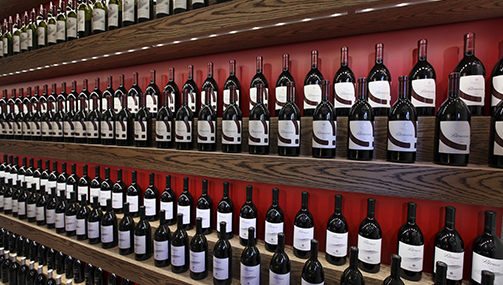
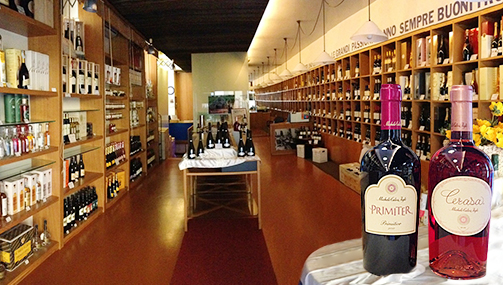
Above: Podere Forte, wine shop Perinquà.
Below: Michele Calò, wine shop.
As regards the strategic actions to be undertaken for the future development, the survey showed that branding and the internet should not be considered priorities for Italian wine. Can you explain this finding?
We proposed 14 strategies and, for each one, we asked for a vote between 1 and 10 on their importance for increasing the success of Italian wine in the future. In itself, the role of the brand, purely from the exterior and packaging aspect, excited a lower level of interest compared to the other strategies because, like the internet, it is seen more as a means than an end. Indeed, the strategy that attracted most votes was that of emphasising a wine’s naturalness and health properties. In second place is the territory: maintaining the link with the territory is considered a value, as is safeguarding the environment from which the wine comes. A third strategy, in second place among the operators of the wine supply chain, concerns exports. At this time, the Italian market has reached a ceiling and is static in quantity terms, while exports seem to offer interesting prospects.
More important are sustainability, as mentioned, and the price. In recent years, the bar of the average price on the Italian market has moved upwards but, especially during the crisis, the consumer has become more sceptical and now demands transparency and consistency, as well as discounts and promotions, especially from the major retail chains and the internet.
Another complementary and synergic strategy that has contributed to renewing the image of wine, opening the door to more aware consumers, concerns organic wines. These are increasing interest and passion, as with other organic food products.
The proposal to diversify wines into a “smart”, easier area has also been considered, bearing in mind young people and occasions when it is important to have limited alcohol content. Innovation and experimentation are important: explaining the new agronomic and wine production techniques is a strategy that met with a certain interest.
How can branding and business on the web be made more effective and incisive?
By always emphasising the personality, the distinctiveness of one wine compared to another. To make the differences clear, the vocabulary has to be constantly renewed, that is to say, the lexicon we use when we describe a wine and its organoleptic components, rather than the production characteristics or the territory of origin. It is important to communicate the elements of the brand image, the wine production house, together with information and terminology that can enrich our knowledge.
What characteristics should the wine of tomorrow possess?
The wine of tomorrow must facilitate and improve the quality of our lives and relationships. It must give pleasure and excitement, maintaining its image as a living, vital product but with a rational, safe, reliable and certified core, so it can be drunk without worries or fears. Not a wine to forget, as once used to be said, or to alter our states of consciousness. On the contrary, the wine of the future will be a wine that enriches, brings emotions, images, culture and all the values connected to the production chain, which is also important for our country from the economic point of view. The wine of the future must be chosen with pride and knowledge about an important industry that needs to be sustained in all its complexity.


